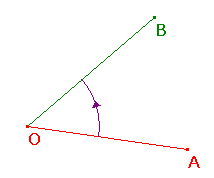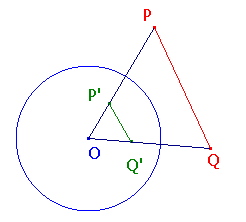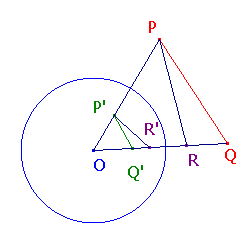


|  |
The Equal Angles Theorem
|
In inversive geometry, we shall generally regard angles as signed quantities. If OA and OB are segments, then there is a rotation about O taking A onto the ray OB. We regard this as defining the angle AOB (note the order of the letters).
Obviously, this rotation is unique modulo 2p,
Note that, if a and b have the same magnitude,
If a is in (0,p), we say it has positive sense,
the rotation is the anti-clockwise angle of magnitude a. Note: since the rotations through ±p are identical, we cannot really attach a "sense" to p. With this definition, we clearly have <BOA = -<AOB.
|  |
| To proceed, we need to look at the effect of inversion on angles. | |
|
The Equal Angles Theorem
Suppose that C is a circle with centre O, and that P and Q are points other than O.
|

|
|
Corollary to the Equal Angles Theorem
Suppose that P, Q and C are as in the theorem, and that R lies on the line OQ. Proof of the Theorem and corollary We are now ready to look at the effect of inversion on lines and circles.
|

|
| Main inversive page |